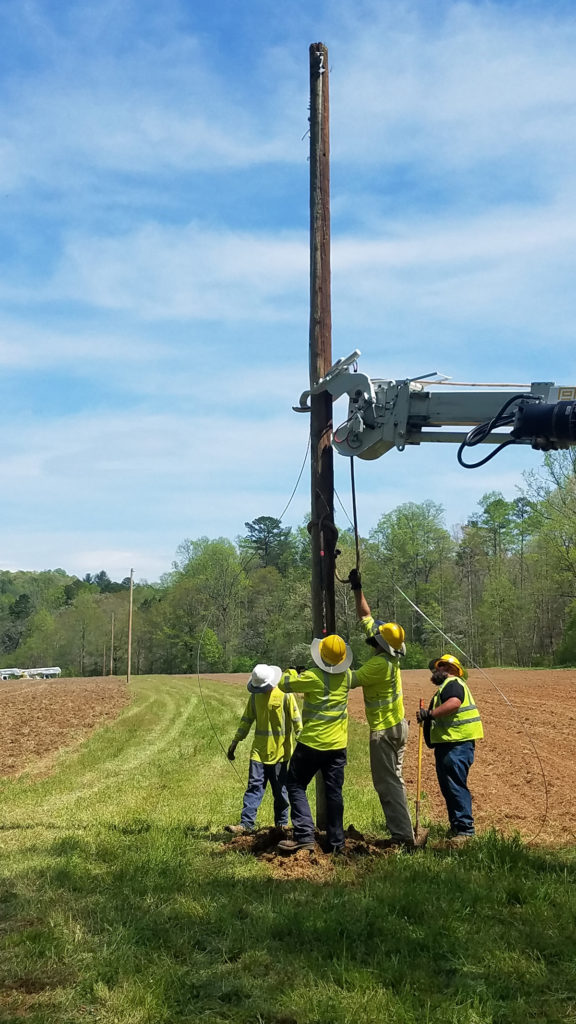
For state wildlife biologists, building roosting lines to support a bevy of mourning doves in a remote and rugged wildlife area was a daunting challenge, technically and financially.
To Blue Ridge Electric Cooperative, helping out the state was just being a good neighbor.
The South Carolina Department of Natural Resources called on the Pickens-based co-op this spring to install roosting lines as a way of creating new dove habitat fields in the Tall Pines Wildlife Management Area. Mourning doves need roosts to serve as a resting place and lookout for predators; biologists need them to count the resident dove population to set annual hunting limits.
The co-op in April sent a contract crew to the wildlife area to build two roosting areas using inactive power line strung across 30-foot poles. One roost is three spans totaling 1,400 feet of line along four poles, and the other spans 500 feet between two poles.
“We really appreciate everything that Blue Ridge did to make these power line structures happen,” said Tammy Wactor Waldrop, a state wildlife biologist. “A contract crew for Blue Ridge worked all day to put these lines up. SCDNR does not have the equipment or expertise to do this, and it would have been very expensive. This just goes to show you how community-oriented Blue Ridge Electric Cooperative is.”
The co-op has lent a hand to the natural resources department on other projects. When the agency built an observation tower on Sassafras Mountain, the highest point in South Carolina, Blue Ridge Electric trimmed trees help promote local tourism and to provide the community with better views to Tennessee and North Carolina.
“We try to help them out when we can,” said Sam McMillan, the co-op’s vice president of operations. “We have a good relationship and support DNR and support wildlife. That supports the community.”
The department established the dove fields last year as the only ones open for public hunting in Greenville County. McMillan noted that the crew that trekked to the dove fields in the wildlife area 30 miles away from town enjoyed the change of pace. The habitat improvements also benefit a variety of other birds and wildlife in the area.
“We were just helping them do a little project,” he said. “We were just being a good neighbor, that’s it.”
Cathy Cash is a staff writer for NRECA.